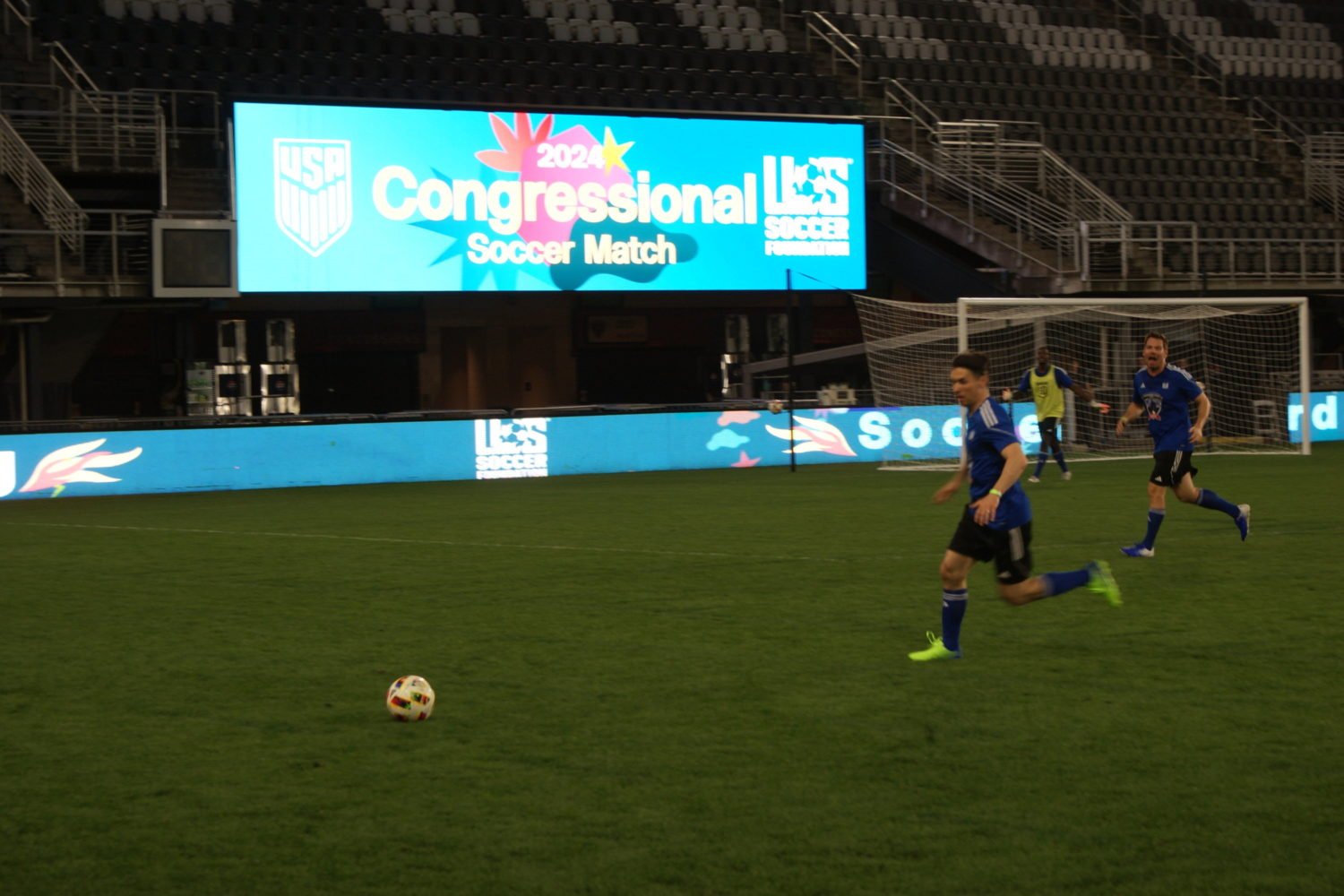When Leona Haas worked for the Army, she had a hard time following the rigid procedures of her office colleagues. "At times, the façade of being nice to one another would drop," she says. "Then we'd see all the anxiety and stress."
But after taking the Myers-Briggs Type Indicator (MBTI), she and her coworkers began to understand how they took in information, made decisions, and communicated.
Haas now administers 2,500 to 3,000 MBTIs a year and consults with private firms, government agencies, and nonprofits on organizational change and communications.
"The Myers-Briggs shows how each of us is born with a certain lens," she says. "We approach the same problem or phenomenon very differently. The big message is that there's no right or wrong on that."
Haas was born in Baltimore in 1947. Her father was a carpenter, and her mother worked in a factory making doll hair. "After high school, I worked in the factory," she says. "I had never realized how hard my mother had to work. I started to smoke, since it was the only time we got to sit down."
She attended Anne Arundel Community College and got a bachelor's degree in technology and management from the University of Maryland. Her master's came from Johns Hopkins in applied behavioral science, with a thesis on "Conflict Management Through Jungian Psychology."
From 1972 to 1987 Haas worked at the Department of the Army in office management. She then joined the National Security Agency, working for nine years in career and organizational development.
In 1994 she established Consultants of the Future. She is also a trainer for Type Resources, one of six companies that qualify people to use the MBTI. She has taught at Montgomery College, and she's a member of the Jungian Society of Washington and the Association of Psychological Type.
Haas lives in Millersville, Maryland, with her husband, Richard, a letter carrier. They have two daughters–Dana, 32, works for a local communications company, and Dawn, 28, lives in Waynesboro, Pennsylvania, working as a computer trainer. The Haases have two granddaughters, Cheyenne and Alexandra.
After administering the MBTI to employees of a local business, she talked about what she's learned.
Explain the Myers-Briggs personality types.
The four letters in each personality type–ESTJ, for instance–are shorthand for how we absorb information, decide, and communicate. Decoding those letters only begins the process. It's how those four letters act and interact that's key. Once people grasp the complexity, they say, "Wow–that's me!"
The first letter is either E or I–extraverting or introverting. It isn't whether you're gregarious or not. It probes whether your energy comes from the external world of people, things, and the environment or from the internal world of thought, reflections, and ideas.
The second letter, S or N, tells how you gather information–by sensing, which is using concrete facts obtained through the senses, or intuiting, which is looking at possibilities, options, meanings, hunches.
There are also two types of sensing and two types of intuiting. So the system does recognize human complexity.
My husband prefers sensing. He's oriented to the tangible and concrete and lives in the present. After he walks into our house, the radio, TV, stereo, everything goes on. His environment has to stimulate him.
When I worked for the military and NSA, they preferred sensing, too, but theirs was an internal sensing. They didn't need to touch or experience anything–they did internal comparisons with past experiences. While my husband is very active with his data, they were very quiet.
There are likewise two types of intuiting. External intuiting entails looking for possibilities and connections by spotting patterns in the environment. You don't connect with what you did before. It's an abstract process that connects events, objects, and people in the environment.
In contrast, you may intuit more by hunch, using your sixth sense. That was my way. It was opposite from my colleagues in the military and NSA. I'd listen and an idea would pop into my head. I lacked much data to support it. I couldn't justify it much, since it came from introverted intuiting. It drove them crazy and forced me to keep many ideas to myself.
The third letter, T or F, describes how you make decisions–by thinking, which is based on analytical evaluation, or by feeling, which is based on values, either yours or those of others. There are two types of thinking–internal and external–and two types of feeling.
The fourth category involves how someone operates in the environment–J or P. Do you prefer judging or perceiving? People who prefer judging like an organized environment with structure. People who prefer perceiving generally go with the flow.
Once you understand the types, and the categories under them, you can understand yourself, others, and an entire organization. It becomes easier for people to operate effectively and efficiently in their environment.
Give an example of how this has worked in your life.
I had a tough time working for the Army, and then for the National Security Agency. I was totally different from those in the military and intelligence communities. I was getting promotions and cash awards, but I went home exhausted. I could communicate, but the effort was draining on me and my coworkers.
Taking the Myers-Briggs at NSA pointed out to me and my colleagues how we could operate better by incorporating different personalities. It helped each of us understand how the others functioned and how we could function more effectively with one another.
Early in my career, I worked in administration. At NSA, I worked in career and organizational development. I wasn't happy and didn't fit in. That changed when I landed in training. People who end up in training share a lot of intuiting.
Where did the test come from?
Myers-Briggs is based on the theories of Carl Jung, a Swiss psychologist who worked with, and then broke with, Freud. He came up with eight personality types.
Meanwhile, Katharine Briggs had been conducting her own research for years. But she threw out most of it once she read Jung. Neither she nor her daughter, Isabel Briggs Myers, was a psychologist. They were just interested in helping people help themselves. They were an everyday mother and daughter who took Jung's complex theories and made them practical.
Type is very complicated. People think it's a four-letter code, but it's a complex system. Isabel Myers referred to type as straws blowing in the wind–it looks simple, but what isn't seen is all the underlying dynamics.
How does this testing help an organization?
It can help employees or partners find the right career by identifying what they are good at and enjoy. Plus it facilitates communication. A boss will give a speech or explain a new policy or venture, but what do others in the organization understand from what she says? What do they think is being said?
The test helps clarify why a colleague is doing what he's doing–your workmates can clearly grasp where you're coming from.
How are these tests being used?
Too often they're being misused. Some executive training sessions allow 15 minutes or a half hour for interpretation of the MBTI. That can be a fun exercise but doesn't have a lot of lasting benefit.
The MBTI itself takes 15 to 30 minutes to complete. It's in the interpretation where the facilitator helps someone find his or her true type. For an individual, at least two hours is required for a good interpretation. A group, team, or family requires about four hours.
I take managers and executives through a group feedback so they can see the difference from each other. Then I provide an hourlong interview with each executive, manager, or leader to talk about his or her processes and the conflict or similarity with other types.
In one exercise, I show executives their written correspondence with their staffs. I then explain which processes they used and which they didn't. Often I show that they were connecting to only one or two people. By changing how they're wording things, they can connect much more. They can feel more comfortable in their roles and their own skins.
One woman had taken the Myers-Briggs eight years before I conducted a workshop with her group. Back then, she had tested as an INTJ–introverted intuiting with extraverted thinking–but she never felt comfortable in her home and work life. She was in a job that required her to be very logical and organized, and she answered the Myers-Briggs in the way she thought she had to in order to succeed as a human-resources manager.
After a one-day session, we found she was more of an INFJ, which means introverted intuiting with extraverted feeling. She stopped resisting her true nature and became a better manager. She felt comfortable with her way of operating, and the staff felt more comfortable with her.
One family I worked with had a seventh-grade boy in trouble at school. The parents were disappointed in him, and he felt bad about himself. He wasn't quick to answer and didn't do his homework fully.
The Myers-Briggs determined that he was an ISTP, with introverted thinking. He put a lot of thought into his homework but felt it was stupid to repeat the internal work on paper. He figured that if his answer was right, the teacher should accept it.
When I explained the situation to the family, the boy started crying and hugged me. Since his parents now understood how he operated, they explained this to the teacher. Everyone then understood his talents. The test helped change his life and the family dynamics. He's now in college, planning to be a doctor.
I give the Myers-Briggs to all sorts of groups, including illiterate employees at a university medical center in Baltimore. It's the same test, administered differently, that I give to CEOs.
One new manager called me in after his team was in a crisis. He was ready to fire the top staff. Since coming there six months before, he talked a lot during meetings, while the previous manager hadn't. The test showed him to be an ESTJ, with extraverted thinking. He needed to talk in order to think. His team had taken that as his being unwilling to listen.
After the staff was tested, he realized that many of his employees operated differently. He apologized for not realizing that his behavior had had an adverse impact on them.
The others started to share where they were coming from. For the first time, people felt comfortable saying, "This is my perception" and "I think I hear . . . ." Six months later, the employees put him up for manager of the year. His strongest proponents were those who had been the most vocal against him.
Don't people change over their lifetimes? Myers-Briggs presumes you'll always be the same type, whether tested at 12 or at 62.
Yes, you will be the same type, but you may use different processes. The MBTI was developed to get at innate type, which never changes. Based on what's going on in your life, you may have a different reported type, but that's not the true validated type.
You can develop ways of proceeding to take into account others in your family or organization. For instance, I wish I'd known about Myers-Briggs when my children were growing up. My first daughter, Dana, was my psychological opposite. I had a hard time building a relationship with her. If I'd had the understanding gained from the MBTI early on, we could have avoided many rough spots.
Much of the time, people aren't allowed to act in organizations how they truly are. They act based on how the boss acts so they don't appear stupid or uncooperative. Using the MBTI allows them to be themselves. It makes them unafraid to talk or ask questions. It allows people to bring their best gifts to the organization.
When I worked for the Army, I could never be myself. For 15 years, I had to be what they wanted me to be. There are lots of employees in government, private firms, and other professions like this. They feel they have to proceed in a certain way. There's no creativity, no change.
Are other tests as good?
Myers-Briggs is dominating the field since it has had more reliability and validity studies. Many other instruments out there are based on it, but they lack the research and positive results of Myers-Briggs.
This test has the benefit of always changing and improving. It was first given to medical students, using terms many less sophisticated people couldn't grasp. It had a clear slant toward the white population. Now it's been translated into different languages and designed to encompass more diverse groups.
I've worked with many tests, but Myers-Briggs is best at describing what we do all day–taking data, making decisions, and telling people about them.
What are your lessons of life?
The biggest by far is that I'm okay. As a child, I was very different from my parents, brothers, and sisters. I wasn't playful–I was far more serious and intuitive.
One day when I was four and in a Catholic preschool, the nuns told us that one of our classmates, Philip, wouldn't be in school for a while. I immediately said that I would never see my best friend again because he had died. I couldn't comprehend what "died" was. I just knew that Philip was gone and I would never play with him or see him again. I had a sense that I couldn't explain. I was right–he had died–but the sisters called my parents and told them to pick me up; I wasn't going to be allowed in preschool again.
This memory, which has stuck with me all my life, shows how different I am from other people. I found out through the MBTI that there were others like me, but that wasn't until I was in my forties.
Taking the Myers-Briggs made a huge difference. I realized I didn't have to strain to please everyone. I could be myself and still make a contribution as a good worker and good mother. For the first time, I felt it was okay to be me.
You can find out more about the Myers-Briggs Type Indicator at mbtitoday.org, a Web site operated by Isabel Briggs Myers's son, Peter, and his wife, Katharine.
"Much of the time," Leona Haas says, "people act based on how the boss acts so they don't appear stupid or uncooperative."

















